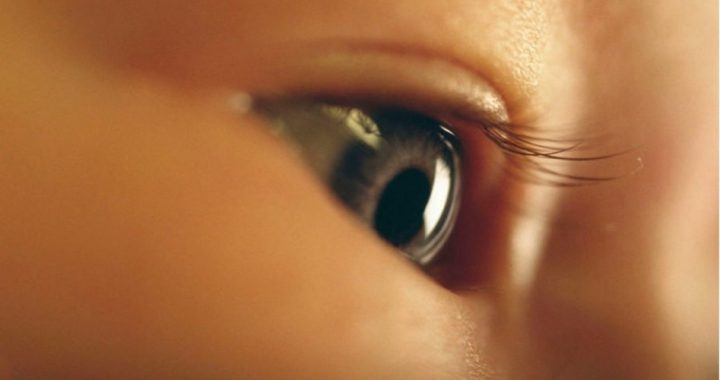
As those in the pro-life movement gear up to observe the 41st anniversary of the Roe v. Wade decision on January 22 with peaceful events, such as the annual March for Life in Washington, D.C., a spirit of optimism prevails among those laboring to restore legal protections for the unborn.
This spirit is reflected in commentaries posted on pro-life websites such as LifeNews.com, LifeSiteNews.com, Lutherans for Life.org, and Priests for Life.org, where articles have cited numerous national polls indicating that a growing number of Americans favor at least some restrictions on abortion. National surveys also show that a growing percentage of Americans self-identify as “pro-life” compared with surveys taken just a few years ago.
Conversely, the view expressed by those defending legal abortions (which “pro-choice” adherents prefer to describe as “reproductive health and rights”) is decidedly apprehensive. This concern was reflected in the headline of a January 2 article posted on the website of the Guttmacher Institute, headlined: “More State Abortion Restrictions Were Enacted in 2011–2013 Than in the Entire Previous Decade.”
The Guttmacher Institure was founded in 1968 by former Planned Parenthood president and former vice president of the American Eugenics Society, Alan F. Guttmacher. It was originally a Division of Planned Parenthood Federation of American but became an independent, non-profit corporation in 1977.
A pair of articles posted by Life News on January 2 and 7 commented on the Guttmacher report. In the latter article, Janice Shaw Crouse (executive director and senior fellow, Concerned Women for America’s Beverly LaHaye Institute) observed: “Clearly, the relatively small pro-life organizations are winning the hearts of the American public — and its legislators — over the giant abortion industry and its powerful allies in the government and the media, and among the elites.”
Crouse also quoted Charles Krauthammer’s remarks made on the Fox News Channel, in which the syndicated columnist described Americans’ changing attitudes toward abortion as the “story of the year, culturally.” Krauthammer offered this explanation for the change: “The fact that people are becoming aware of how late-term abortions are so near to infanticide. And also how the new technology and the ultrasounds are giving people awareness of how much an infant has developed in the womb. So the movement has stopped, and I think reversed, especially among young people.”
Crouse summed up her article: “Guttmacher is right: The abortion landscape has dramatically changed. Mr. Krauthammer is also right: It was the story of the year for 2013.”
Looking at the January 2 Guttmacher article, we read:
Twenty-two states enacted 70 abortion restrictions during 2013. This makes 2013 second only to 2011 in the number of new abortion restrictions enacted in a single year. To put recent trends in even sharper relief, 205 abortion restrictions were enacted over the past three years (2011–2013), but just 189 were enacted during the entire previous decade (2001–2010).
Leading the nation in new abortion restrictions were North Dakota and Texas, which together enacted 13 restrictions in 2013.
Guttmacher, which apparently keeps a careful scorecard when it comes to rating states as either “hostile” or “supportive” of legalized abortion, noted that the number of states “hostile” to abortion increased from 13 in 2000 to 27 in 2013. The article notes, “The proportion of women living in restrictive states went from 31% to 56%, while the proportion living in supportive states fell from 40% to 31% over the same period.” (Emphasis added.)
The states classified as “hostile” by Guttmacher are Alabama, Arizona, Arkansas, Florida, Georgia, Idaho, Indiana, Kansas, Kentucky, Louisiana, Michigan, Mississippi, Missouri, Nebraska, North Carolina, North Dakota, Ohio, Oklahoma, Pennsylvania, Rhode Island, South Carolina, South Dakota, Tennessee, Texas, Utah, Virginia, and Wisconsin.
The writer stated: “This legislative onslaught has dramatically changed the landscape for women needing abortion,” but did not specify exactly which medical conditions indicated a medical “need” for abortion.
The report also lamented the fact that several states prohibited the use of state family planning funds for abortion counseling and referral. Apparently, Guttmacher sees nothing wrong with using money taken from taxpayers — a significant number of whom may be morally opposed to abortion — to pay for abortion referrals.
In addition to the proliferation of state laws restricting abortion, the pro-life websites also reported on the growing percentage of Americans who consider themselves “pro-life” and who favor at least some restrictions on abortion.
In a January 7 article posted on Life News, Kelsey Hazzard (the head of Secular Pro-Life) compiled data from several polls to substantiate her contention that members of the younger generation are more pro-life than their elders. Hazzard cited a poll conducted prior to the 2008 presidential election by the New York Times, CBS News, and MTV that indicated that Americans under 30 were more likely than the general population to say that abortion should be illegal or more strictly limited. Among all adults, 58 percent supported abortion restrictions, but 62 percent of young adults favored such restrictions.
Hazzard also noted a 2010 article published by the Gallup polling organization entitled “Generational Differences on Abortion Narrow.” The Gallup article reported that polls conducted in the 1990s showed that those in the 18-to-29-year-old age group were the most supportive of unrestricted legal abortion. However, by 2010, young people were more pro-life than the 30-49 group and the 50-64 group. Only those 64 and older were more pro-life.
In addition to sheer numbers, however, younger people who were pro-life felt stronger about their stand than those who were pro-abortion. Hazzard pointed to an article published by the pro-life Susan B. Anthony list that noted: “Upon her resignation in 2012, NARAL President Nancy Keegan stated that there is a large ‘intensity gap’ among young people on the subject of abortion. An internal poll by NARAL shows that 51% of pro-life young people see abortion as an important electoral issue, while only 20% of pro-choice young people feel the same way.”
The website of Priests for Life compiled data from a number of polls that indicated that our nation is moving in a pro-life direction, including a July 18-21, 2013 Washington Post/ABC News poll in which 56 percent of respondents said abortion should be restricted at 20 weeks as opposed to 24 weeks.
Priests for Life also referenced a May 22, 2012 Gallup Poll finding that 51 percent of Americans believe that abortion is “morally wrong,” while only 38 percent believe it is “morally acceptable.”
An article posted on LifeSiteNews.com on January 17 noted that a new Rasmussen poll indicated that 49 percent of Americans support waiting periods for women to have abortions, 39 percent oppose a waiting period, and 11 percent are uncertain. Support for a waiting period is up by six percent since October 2013, when those opposing and supporting this restriction were tied at 43 percent each.
Those who participate in the nation’s life marches this January 22 may be fortified by the knowledge that much progress has been made, though realizing that ultimate victory in the battle for life may still be years away.



